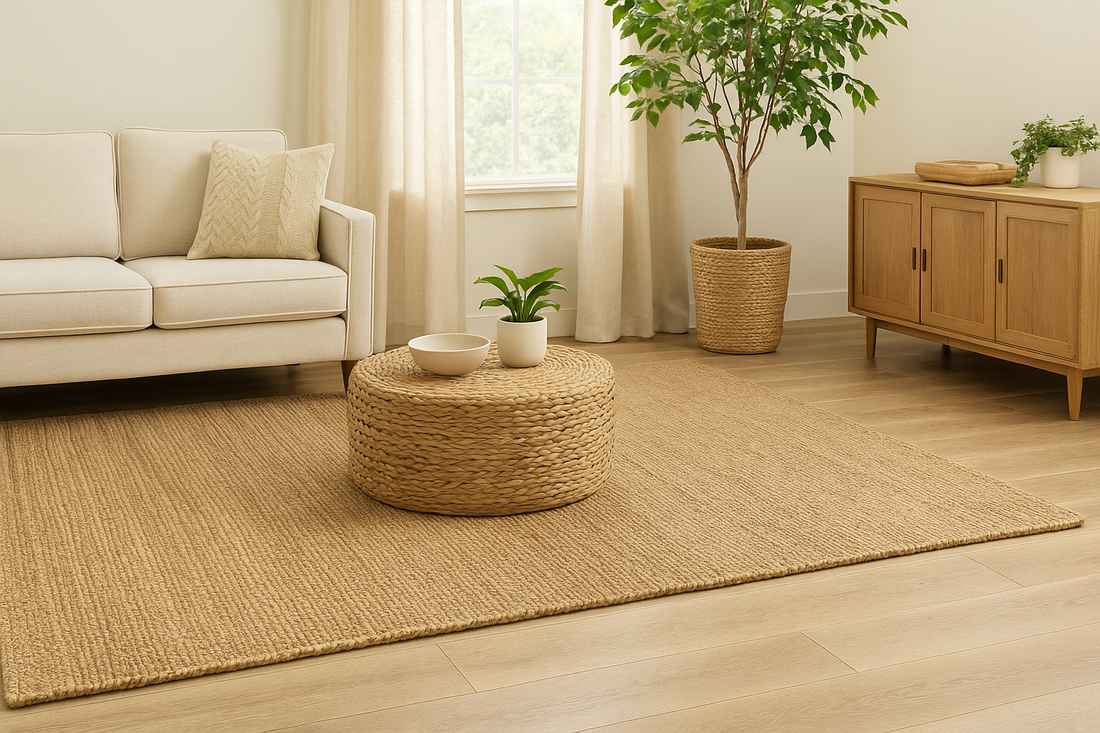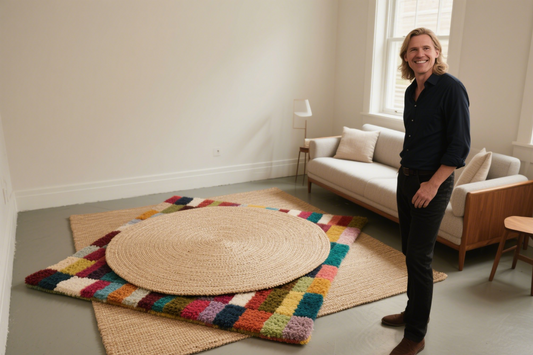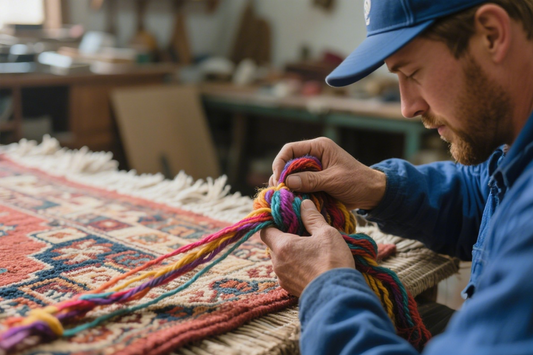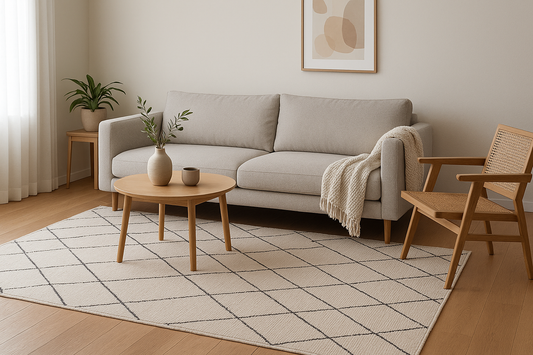The modern home is no longer just about aesthetics—it’s also about impact. As climate concerns grow and consumers become more conscious of their purchases, the rug industry is experiencing a powerful shift: sustainability is now as important as style.
At USTIDE, we believe that beauty and responsibility can (and should) go hand in hand. From natural fibers to low-impact production, let’s explore how eco-friendly rugs are redefining interiors—and why they’re here to stay.
1. Why Sustainability Matters in Rugs
Rugs may seem simple, but the traditional rug industry can be resource-intensive:
-
Synthetic fibers like nylon and polyester are derived from petroleum and are non-biodegradable.
-
Chemical dyes and finishes can pollute waterways and affect indoor air quality.
-
Mass production often overlooks fair labor and ethical sourcing.
Switching to eco-friendly materials and processes is not just better for the planet—it also results in healthier homes and more mindful living.
2. What Makes a Rug Eco-Friendly?
An eco-friendly rug typically checks several of the following boxes:
-
✅ Made from natural or recycled materials (like wool, jute, organic cotton, bamboo, or recycled PET)
-
✅ Dyed using non-toxic, water-based dyes
-
✅ Biodegradable or recyclable at the end of its life
-
✅ Produced with fair labor practices
-
✅ Low emissions and energy use during production
At USTIDE, we evaluate every rug design through these criteria to ensure it aligns with our mission of ethical and sustainable living.

3. Top Sustainable Materials in Modern Rugs
🌿 Jute
A fast-growing, renewable plant fiber, jute is biodegradable, strong, and perfect for casual, earthy spaces. It’s grown without pesticides and requires little irrigation.
🧶 Wool
Naturally insulating and renewable, wool is long-lasting and biodegradable. It doesn’t release microplastics and often requires less frequent washing than synthetic rugs.
🍃 Bamboo
Bamboo grows quickly without replanting and absorbs more CO₂ than most plants. Bamboo rugs (or viscose derived from bamboo) are sleek, modern, and naturally antimicrobial.
♻️ Recycled PET (rPET)
Made from post-consumer plastic bottles, rPET rugs offer softness, water resistance, and durability—especially for outdoor and family-friendly spaces.
🌱 Organic Cotton
Free of toxic pesticides and grown using sustainable practices, organic cotton rugs are soft, breathable, and perfect for kids’ rooms or gentle interiors.
4. Sustainability Beyond Materials
An eco-friendly rug is about more than fiber content. At USTIDE, we believe in holistic sustainability, which includes:
🌏 Ethical Manufacturing
We partner with artisan workshops and factories that provide fair wages, safe working conditions, and skill development—supporting human sustainability too.
♻️ Low-Impact Dyes
We opt for azo-free, low-water dyes whenever possible to minimize waste and reduce the release of harmful chemicals into the environment.
📦 Eco-Conscious Packaging
Many of our rugs are shipped using recyclable materials and minimal plastic to reduce carbon footprint from production to delivery.
5. The Benefits of Eco-Friendly Rugs in Your Home
Going green isn’t just better for the planet—it’s better for you, too.
-
Healthier indoor air – Natural materials and non-toxic dyes mean fewer VOCs (volatile organic compounds) polluting your home.
-
Timeless style – Eco-friendly rugs often lean into classic, earthy designs that don’t follow fleeting trends.
-
Longer lifespan – Sustainable rugs are often made with durability in mind, reducing waste in the long term.
-
Peace of mind – Every time you walk across your rug, you’ll know it aligns with your values.
6. How to Identify a Truly Sustainable Rug
Unfortunately, “greenwashing” is common in the home decor industry. Here’s what to look for:
-
Material transparency – Is the rug made from a renewable, biodegradable, or recycled source?
-
Certifications – Look for GOTS (organic textiles), GoodWeave (ethical labor), OEKO-TEX (non-toxic), or Global Recycled Standard labels.
-
Production story – Does the brand share who made the rug, where, and under what conditions?
At USTIDE, we aim to answer these questions up front—because transparency is part of true sustainability.
7. Looking Ahead: The Future of Sustainable Rugs
The rug industry is rapidly evolving. We’re seeing:
-
Innovation in plant-based dyes
-
Closed-loop production systems that eliminate waste
-
Zero-waste weaving techniques
-
Hybrid materials blending recycled synthetics with natural fibers for durability and biodegradability
At USTIDE, we’re committed to staying at the forefront of these changes—combining style, tradition, and innovation to craft rugs you can feel good about.
Conclusion: Beauty with a Purpose
Choosing an eco-friendly rug isn’t just a design decision—it’s a commitment to a better world. Whether you’re drawn to a handwoven jute rug, a plush recycled-fiber area piece, or a minimalist bamboo mat, you’re choosing to decorate with intention.
At USTIDE, we’re proud to design rugs that reflect not only your aesthetic—but your values. Because a truly beautiful rug doesn’t just complement your home—it supports the planet it sits on.




